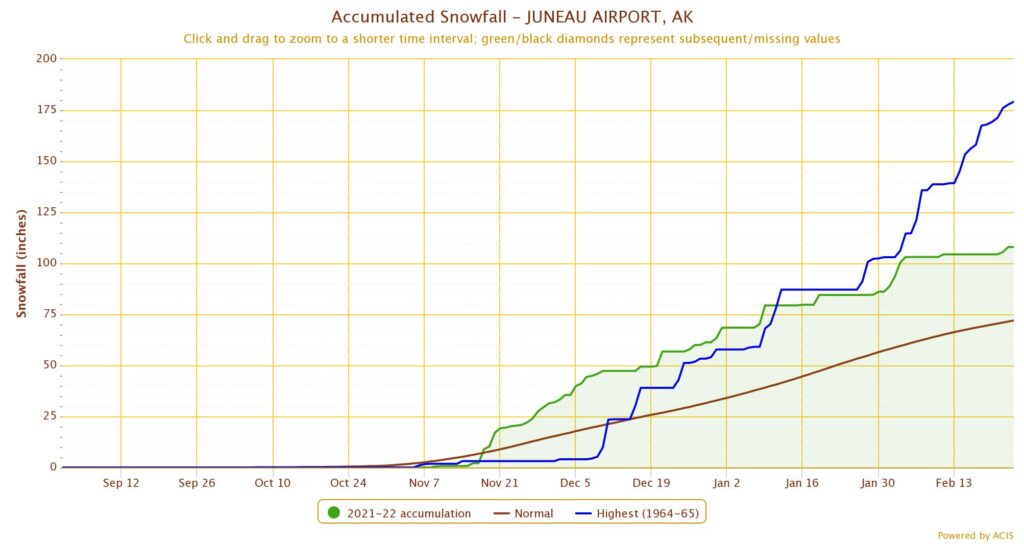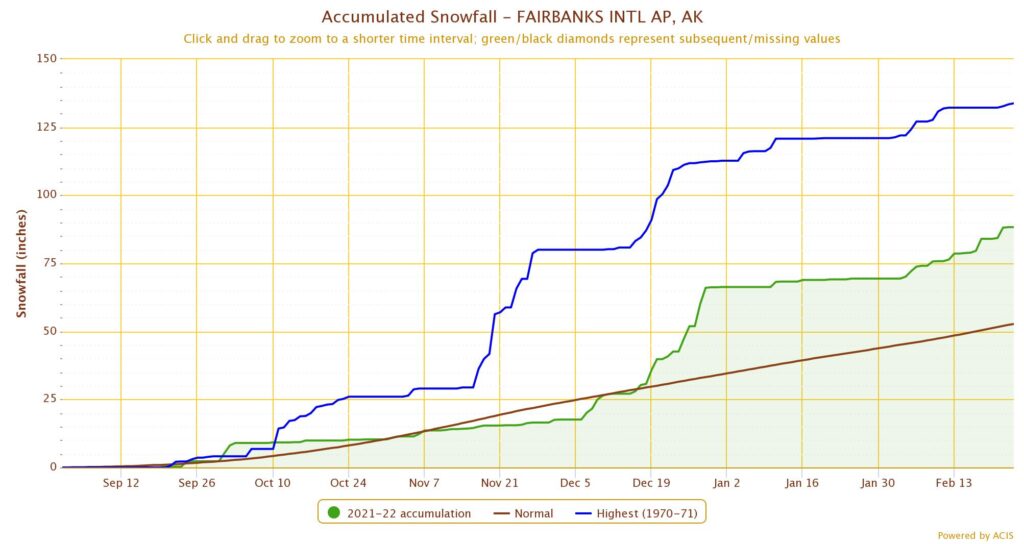Find out where to go with our weather planner. Average Annual Snowfall Totals in Alaska - Current Results
Alaska Snow Report | Snowpack & Snowfall Totals - SNOFLO
Climate Normals. It also has the most temperature variation of any region in Alaska, including temperature shifts of as much as 30 F in one day! if(elementorFrontend.isEditMode() && $scope.find(".uael-particle-wrapper").hasClass("js-is-enabled") && window.backend == 0 ){
July is the hottest month for Fairbanks with an average high temperature of 73.3, which ranks it as one of the hottest places in Alaska. In Interior Alaska, as little as 37.6 inches of snow can fall annually. Home | Privacy & Cookies | Contact | About. 

